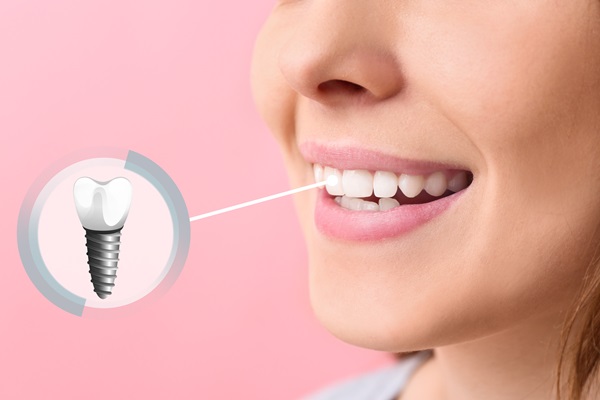How Is a Dental Implant Placed?

The placement of dental implants is an intricate process involving the insertion of titanium posts into the jawbone. The posts mimic the functions of the natural tooth roots by fusing to the jawbone and support the replacement tooth attached to them. The process involves multiple dental implants, but the process is generally worth the trouble. Continue reading to get an overview of what is involved in placing dental implants.
The implant procedure
The number of missing teeth determines the number of implants required. Only one implant is needed for a lost tooth, and four to six implants may be used to support an entire arch of missing teeth.
The process of placing one dental implant lasts between 30 to 60 minutes and about two to three hours for multiple implants. The patient’s condition will determine the length of the procedure and the number of appointments needed. The dentist will perform the needed assessment to obtain information about the patient’s situation.
Before the placement, patients may be administered a course of antibiotics, and intravenous sedation or nitrous oxide might be used to ensure comfort. The dentist will discuss these options during the initial consultation. A local anesthetic will be used around the point of implant placement.
When the patient is at ease, the dentist will create a little incision over the gum tissue to access the bone, open the space with dental tools, and insert the implant post. The head of the implant will protrude slightly through the gum. The dentist may choose to allow the gum tissue to cover the implant completely. The gum tissues will be stitched closed to complete the implant placement.
After the procedure
The healing period follows the implant placement process. The duration is hardly the same for everyone and depends on the health and quantity of the bone. Patients may experience slight pain after the procedure, but the dentist will prescribe medications to relieve the pain. If self-dissolving stitches are not used, patients will return to get the stitches taken out.
Sometimes, a restoration may be attached immediately after implant placement. The dentist will provide suggestions on follow-up care and appointments. After the bone heals around the implant – a process which may take between three to six months – the dentist will place the abutment or a healing cap on the implant. This will guide the gum tissue healing, and the abutment will serve as the connection between the restoration and the implant.
The dentist will take dental impressions and send them to a dental lab to produce the dental crown. Follow-up appointments allow the dentist to monitor healing progress and determine when the time is right to attach the dental restoration. The implant procedure ends once the crown is fitted over the dental implant.
In conclusion
The placement of dental implants is a multi-stage process. Considering that implant restorations look, function, and feel like natural teeth, the lengthy process is usually worth it. If you are considering the procedure, book an appointment with the dentist to discuss eligibility and the process.
Request an appointment here: https://www.jamaicadentalny.com or call Jamaica Queens Dental at (718) 416-6427 for an appointment in our Richmond Hill office.
Check out what others are saying about our dental services on Yelp: Dental Implants in Richmond Hill, NY.
Related Posts
A root canal restores a damaged or infected tooth without removing it, and recovery usually proceeds smoothly with the right care. Mild tenderness is common as the tissues calm down, especially when chewing or when the tooth is touched. Good oral hygiene, smart food choices, and timely follow-up help the tooth feel normal again. Because…
Traditional braces are one of the most effective orthodontic solutions for straightening teeth and correcting bite issues. Many individuals are surprised to learn that receiving traditional braces from a general dentist can be a convenient and effective way to improve their smile. General dentists with additional training in orthodontics can provide comprehensive care, guiding patients…
Getting a dental filling is a common procedure where a dentist restores the integrity of a decayed or damaged tooth. After placing a filling, you need to take the correct steps during recovery to ensure its durability and long-term effectiveness. Avoiding certain activities and habits promotes long-term oral health and prevents potential complications.One of the…
TMJ treatment is an important service general dentists offer for patients experiencing pain or discomfort in their temporomandibular joint (TMJ), which connects the jawbone to the skull. TMJ disorders can cause a variety of symptoms, including jaw pain, headaches, and difficulty with chewing or speaking. Since the symptoms can affect daily activities, it is crucial…







